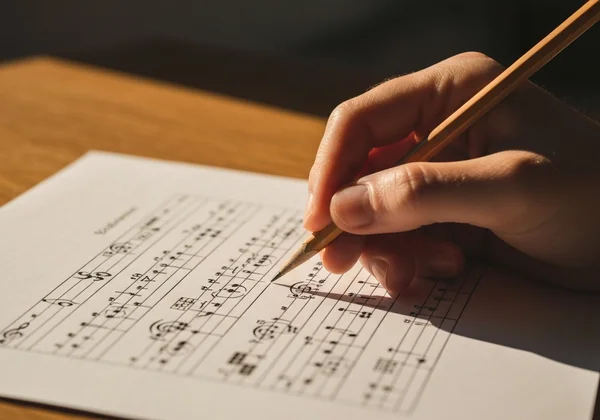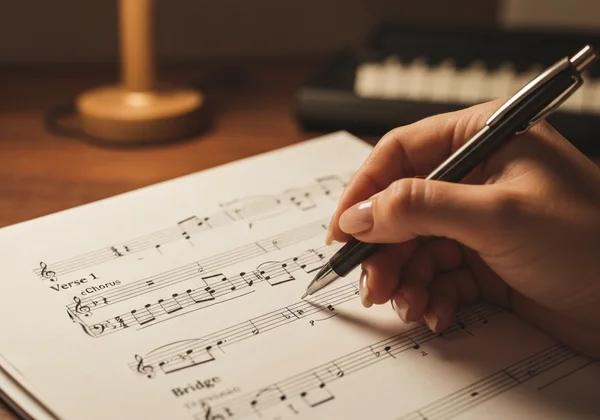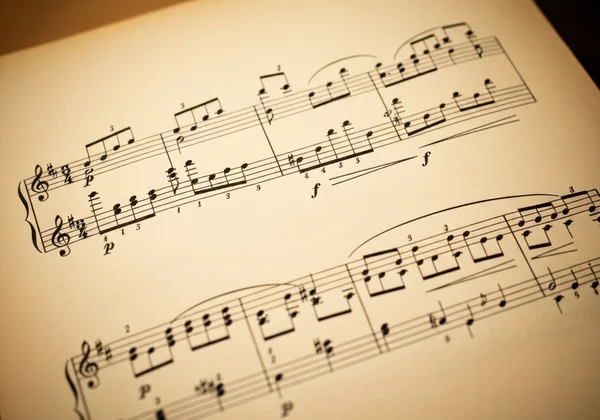Song Structure: How to Write Your First Song Using Free Printable Staff Paper
You have a melody stuck in your head, a few great chord changes, and maybe even a killer line for a chorus. But how do you turn those ideas into a complete song? The secret lies in understanding song structure. This guide is your roadmap, showing you how to organize your musical fragments into a cohesive and compelling piece. We'll explore the essential building blocks of songwriting and demonstrate how traditional staff paper is the perfect tool to map out your masterpiece. With the right template from our comprehensive collection, you can transform that spark of an idea into a fully-formed song.

Understanding Essential Song Structure Types
Before you write a single note, it’s crucial to understand the framework that holds a song together. Song structure is like the architectural blueprint for your music; it guides the listener on an emotional journey, creating anticipation and delivering satisfying resolutions. A solid structure makes your song feel complete and professional, rather than like a random collection of ideas. It provides repetition to make your song catchy and variation to keep it interesting.
The Versatile Verse-Chorus Form: A Songwriter's Blueprint
If you've listened to the radio in the last 50 years, you're intimately familiar with the verse-chorus form. It's the most common and effective structure in pop, rock, country, and countless other genres. The verse tells the story and develops the narrative, with different lyrics each time, while the chorus contains the main message or hook, with repeating lyrics and melody. This powerful contrast between the verse's storytelling and the chorus's memorable hook is what makes songs stick in our heads. A typical pattern is Verse-Chorus-Verse-Chorus-Bridge-Chorus.
Exploring AABA and Bridge Forms for Musical Variety
While verse-chorus is king, other forms offer unique creative possibilities. The AABA structure, popular in jazz standards and early pop, consists of two similar opening sections (A), a contrasting middle section (B, often called the bridge), and a return to the opening section (A). The bridge is a vital tool in any structure; it's a section that provides a musical and lyrical departure from the verse and chorus. It can introduce a new perspective, a different chord progression, or a change in energy, making the final return to the chorus feel even more impactful.
Why Clear Structure Elevates Your Songwriting
Understanding song structure isn't just an academic exercise. A clear structure makes your music more accessible and enjoyable for the listener. It creates a sense of predictability and familiarity, which allows the emotional content of your music to shine through. For you as the writer, it provides a clear path forward, helping you overcome writer's block by giving you a framework to fill. It transforms the chaotic process of creation into a manageable, step-by-step journey.
Mapping Your Song Ideas: How to Write a Song on Staff Paper
Digital tools are powerful, but the simplicity of pen and paper is unmatched for capturing raw inspiration. Using staff paper to sketch out your song allows you to visualize its flow, experiment with arrangements, and connect directly with your music without the distraction of a screen. It’s the classic method for a reason—it works. This hands-on approach forces you to think deliberately about every element of your composition.

Choosing the Right Staff Paper for Your Composition
The first step is getting the right canvas. The type of song you're writing dictates the paper you need. Are you composing a piano ballad? You'll need a Grand Staff. Writing a guitar-driven rock song? Guitar staff paper with both standard notation and TAB staves is ideal. For a simple vocal melody, a standard 10 or 12-stave sheet will do. Our website provides a comprehensive library of free staff paper, allowing you to download and print the exact format you need, from choir arrangements to bass lines, completely free.
Sketching Your Initial Melody and Chord Progression
With your manuscript paper in hand, it’s time for the fun part. Don't worry about perfection; just get your ideas down. Hum your melody and sketch the general shape of it on the staves. You don’t even need to know every note name perfectly at first. Above the staff, write down the chord symbols (e.g., G, C, D7) where the changes happen. This combination of melody and harmony is the heart of your song. This is your "draft" where you can freely explore melody writing and test out chord progression ideas.
Visualizing Sections: Planning Verse, Chorus, and Bridge Layout
This is where staff paper becomes your ultimate songwriting template. Use a pencil to label the sections directly on the page. Write "Verse 1" at the top of the first system, followed by "Chorus." Map out how many bars each section will be. For example, you might decide on an 8-bar verse and an 8-bar chorus. Seeing the entire structure laid out visually helps you balance the song's proportions and ensure a smooth flow. This process of planning song sections on paper makes arranging and rearranging your ideas incredibly intuitive.

Refining Your Song: Transitions, Dynamics, and Flow
Your song is structured and sketched out, but now it's time to breathe life into it. This stage is about adding the polish and detail that elevates a simple sketch into a compelling piece of music. It’s about focusing on the journey between sections and adding the emotional cues that will connect with your listener. The goal is to achieve a seamless musical flow.
Crafting Seamless Transitions Between Song Sections
How you move from the verse to the chorus is just as important as the sections themselves. A clunky transition can ruin the momentum of a song. Think about how to create smooth song transitions. You could use a short instrumental fill, a change in rhythm, or a "pre-chorus" section that builds tension and anticipation for the hook. Mark these ideas on your staff paper—a quick drum fill notation or a specific chord can serve as a reminder.
Adding Dynamics and Articulation for Emotional Impact
Music isn't just about the right notes; it's about how you play them. Use your staff paper to add instructions for musical dynamics and articulation. Is the verse soft and intimate? Mark it with a p (piano). Does the chorus explode with energy? Mark it with an f (forte). Use articulation marks like staccatos (dots) for short, punchy notes or slurs for smooth, connected phrases. These small details are what give your song its emotional power and character.

Reviewing and Revising Your Song's Overall Structure
Your first draft is never the final one. Play through your song from beginning to end, following your manuscript. Does the structure feel right? Is the bridge in the right place? Don't be afraid to erase, rewrite, and restructure. Maybe a verse is too long, or the song needs a second bridge. This revision process is a critical part of songwriting. Your staff paper is your working document, a space for experimentation and refinement until every section feels perfect. Check out our templates and tools to help.
Frequently Asked Questions About Songwriting and Staff Paper
Where can I get free printable staff paper for my songwriting?
You can get high-quality, fully customizable, and free printable staff paper directly from our site. The site offers dozens of templates for various instruments and ensembles, including piano, guitar, choir, and more, which you can download for free in PDF format instantly.
How can staff paper help me organize my song ideas effectively?
Staff paper provides a visual framework to map out your song. It allows you to assign specific musical ideas to sections like verses, choruses, and bridges. By writing out melodies and chord changes and labeling each section, you can see your song's entire structure at a glance, making it easier to arrange, revise, and ensure a balanced and logical flow.
What is the most common song structure for beginners to learn?
The verse-chorus structure is by far the most common and is an excellent starting point for beginners. Its repetitive chorus creates a memorable hook for listeners, while the verses allow for storytelling and development. It's a proven formula that is both easy to understand and incredibly effective across many genres.
How many lines are on standard staff paper used for composing?
A standard musical staff consists of five parallel horizontal lines and the four spaces between them. A single page of staff paper, also known as manuscript paper, typically contains multiple staves, commonly 10 or 12, to provide ample space for composing.